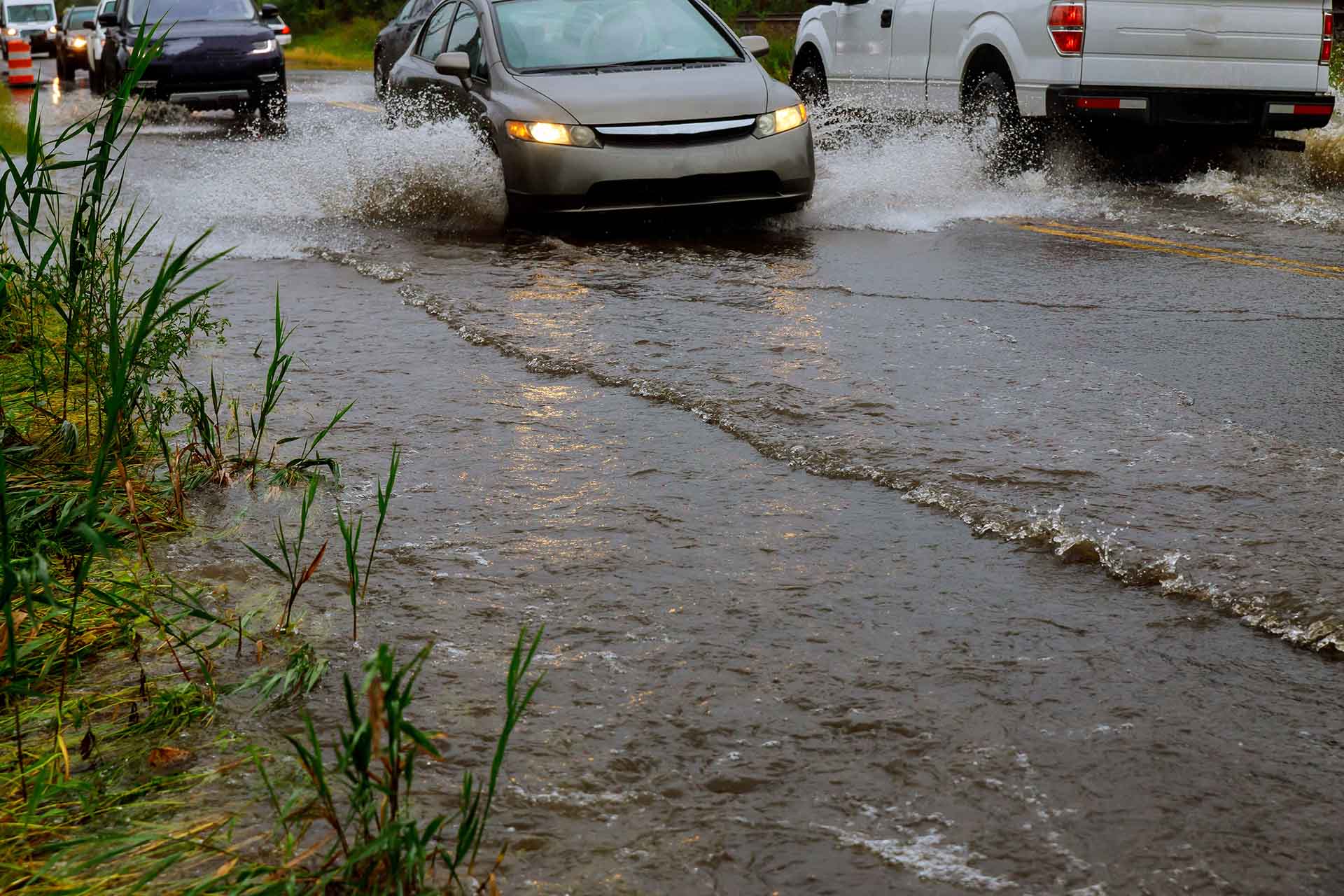
Canada is often associated with snow and icy winters, but many regions also face heavy rain, flooding, and high humidity – conditions that can be just as damaging to your vehicle.
From British Columbia’s atmospheric rivers to spring thaws in Quebec and the Maritimes, water-related weather is becoming more frequent and severe.
Knowing how to prepare your car for these conditions can prevent costly damage and keep you safe on the road.
In this guide, we’ll explore how rain, flooding, and humidity affect vehicles in Canada, plus practical steps you can take to protect yours.
Why Wet Weather Is Tough On Vehicles
Excess water and moisture can harm your vehicle in ways you might not expect:
- Flooding risks: Water can enter the engine, transmission, and electronics, leading to irreparable damage.
- Brake performance: Wet conditions reduce braking efficiency, making stopping distances longer.
- Corrosion: Humidity and standing water accelerate rust on undercarriages, brake lines, and body panels.
- Interior damage: Leaks or poor sealing can result in mold, mildew, and foul odours.
- Electrical issues: Modern cars rely heavily on sensors and wiring that don’t mix well with water.
Understanding these risks is the first step toward prevention.
Preparing Your Vehicle For Heavy Rain
Rain is the most common wet-weather challenge Canadian drivers face. Here’s how to prep:
Check Wipers and Washer Fluid
Replace wiper blades at least once a year to ensure clear visibility. Top up with washer fluid designed for year-round use.
Inspect Tires
Good tread depth is crucial for traction on wet roads. Consider all-season or rain-focused tires with deeper grooves.
Test Lights
Ensure headlights, taillights, and brake lights are working so you’re visible to other drivers in heavy rain.
Maintain Brakes
Have your brake system inspected regularly. Wet conditions make brakes work harder, so don’t ignore squeaks or reduced responsiveness.
Protecting Against Flooding
Flooding events are on the rise in Canada, particularly during spring melts and heavy rainfall.
Even shallow water can cause serious damage.
- Avoid Driving Through Floods
Water as shallow as 15 cm (6 inches) can cause loss of control. More than 30 cm (a foot) can float most vehicles. If you’re unsure of the depth, turn around.
- Elevate Parking if Possible
If you live in a flood-prone area, avoid street parking during storms. Move your car to higher ground when warnings are issued.
- Install Floor Liners
Weatherproof mats can protect your interior if water does get inside.
- Check Seals and Drains
Inspect door seals, window seals, and sunroof drains. Clogged drains are a common cause of water leaking into cars.
Combating Humidity
High humidity may not seem as destructive as flooding, but it can cause gradual and expensive damage.
- Ventilation Is Key
Don’t leave your vehicle sealed in a damp garage without airflow. Consider using a dehumidifier or moisture-absorbing packets.
- Protect Interior Surfaces
Leather seats can crack or mold; fabric seats can mildew. Use protectants and clean upholstery regularly.
- Rust Prevention
Rust thrives in humid conditions.
Apply an anti-rust spray to vulnerable undercarriage areas and touch up paint chips promptly.
What To Do If Your Car Gets Caught In Flooding
Despite your best efforts, sometimes water finds a way in. If your car is submerged or exposed to floodwater:
Do Not Start the Engine
Attempting to start a flood-damaged car can make the damage worse.
Disconnect the Battery
This helps protect sensitive electronics from shorting out.
Call for Professional Help
Have your vehicle towed to a mechanic. A professional inspection is critical to determine if the car can be saved.
Contact Insurance Immediately
Many Canadian auto insurance policies cover flood damage, but prompt reporting is essential.
Insurance and Financial Protection
Water damage can be unpredictable, but insurance coverage can help ease the financial burden.
Comprehensive insurance typically covers:
- Flooding from storms or rising water.
- Interior water damage from leaks.
- Electrical or mechanical failures caused by water.
Review your policy to ensure you’re covered for severe weather – and if not, consider adding comprehensive protection.
Staying Cool Under The Heat
Rain, flooding, and humidity are becoming a bigger part of Canadian weather patterns, and drivers need to adapt.
From routine maintenance like checking wipers and tires to bigger steps like flood-proof parking and insurance review, preparation goes a long way.
A car that’s ready for wet weather is not only safer to drive but also far less likely to face costly damage.
By staying proactive, you can ensure your vehicle weathers the storm – literally.





